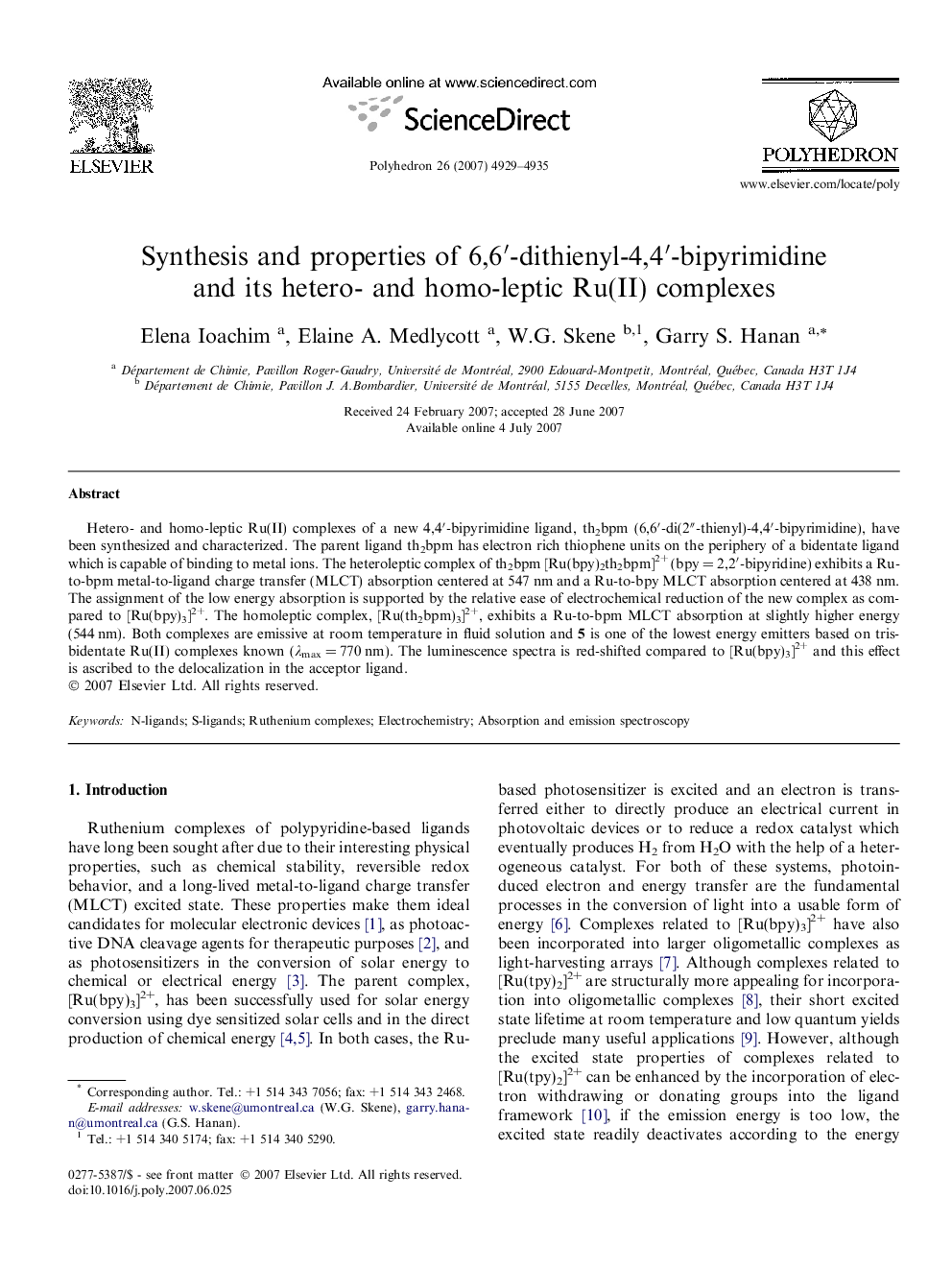| Article ID | Journal | Published Year | Pages | File Type |
|---|---|---|---|---|
| 1338015 | Polyhedron | 2007 | 7 Pages |
Hetero- and homo-leptic Ru(II) complexes of a new 4,4′-bipyrimidine ligand, th2bpm (6,6′-di(2″-thienyl)-4,4′-bipyrimidine), have been synthesized and characterized. The parent ligand th2bpm has electron rich thiophene units on the periphery of a bidentate ligand which is capable of binding to metal ions. The heteroleptic complex of th2bpm [Ru(bpy)2th2bpm]2+ (bpy = 2,2′-bipyridine) exhibits a Ru-to-bpm metal-to-ligand charge transfer (MLCT) absorption centered at 547 nm and a Ru-to-bpy MLCT absorption centered at 438 nm. The assignment of the low energy absorption is supported by the relative ease of electrochemical reduction of the new complex as compared to [Ru(bpy)3]2+. The homoleptic complex, [Ru(th2bpm)3]2+, exhibits a Ru-to-bpm MLCT absorption at slightly higher energy (544 nm). Both complexes are emissive at room temperature in fluid solution and 5 is one of the lowest energy emitters based on tris-bidentate Ru(II) complexes known (λmax = 770 nm). The luminescence spectra is red-shifted compared to [Ru(bpy)3]2+ and this effect is ascribed to the delocalization in the acceptor ligand.
Graphical abstractA new bis(thienyl)-bipyrimidine ligand readily forms Ru(II) complexes which emit at significantly lower energy than the parent Ru(bpy)32+ complex.Figure optionsDownload full-size imageDownload as PowerPoint slide
